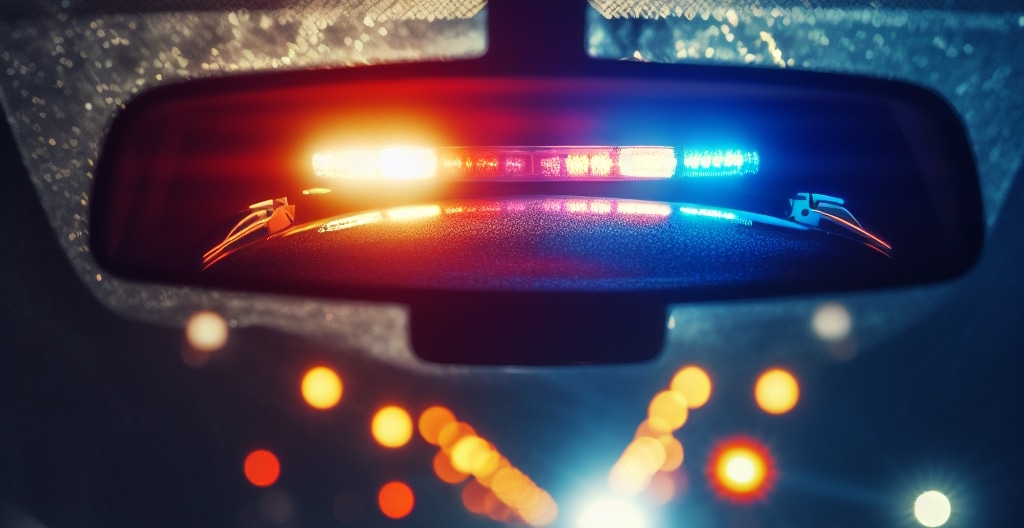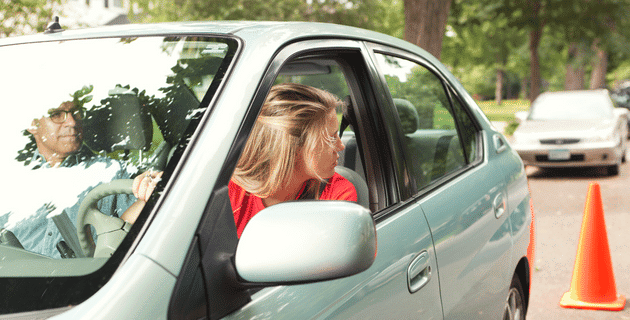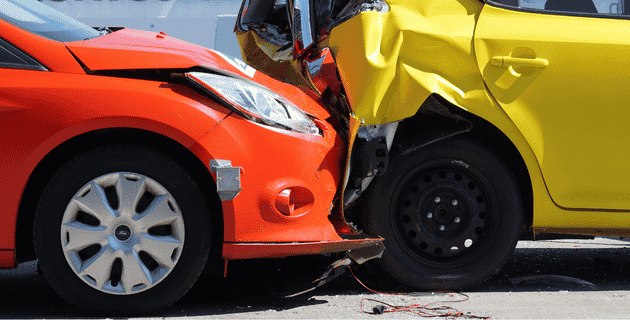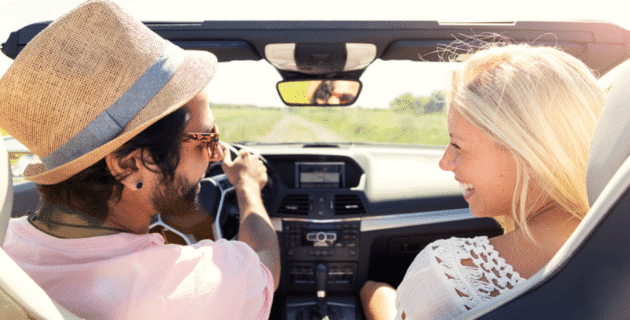by California Casualty | Nurses |
Alright, what’s the secret?
There has to be something our top bloggers know that I don’t. Because for the life of me I cannot figure out how you guys (and gals!) find time to do all the things you do!
Today’s Battle of the Blog spotlight is on our FIRST NURSING blogger!

This is Keith Carlson, RN (aka: “NurseKeith”)
NurseKeith is a registered nurse, professional coach, writer, AND rock star blogger. Oh, excuse me, did I forget to mention he also co-founded an internet radio station called “RN.FM Radio: Nursing Unleashed”?
Seriously, people, how can you pull all this off!?
The name of Keith’s blog (well….one of them) is Digital Doorway. In his blog posts, NurseKeith discusses everything from the latest happenings in the world of nursing to book reviews to personal stories from his nursing experiences.
The real miracle is that Keith found some time to talk to us about his blog. Learn more below!
How would you describe Digital Doorway?
Digital Doorway is a venue for my thoughts, opinions and reflections on issues related to nursing, health care, and coaching.
What would you say is the focus or mission?
The mission of my blog is to be informative, thought-provoking, and intellectually stimulating, and to communicate important and timely information related to nursing and healthcare, as well as social justice and related topics.
What inspired you to start it?
I started Digital Doorway as a means to use my voice as a nurse and writer in a public format.
My blog began more as a personal exploration of issues important to me, and in the last 4 to 5 years it has become increasingly focused on nursing and health care.
How long have you been writing on this particular blog?
Digital Doorway has been active since January of 2005.
Do you have a favorite thing to write about?
My favorite subjects to write about are nursing, health care, social justice, and health.
Tell us a little bit about your blog ‘community’ …
My blog community is varied and sundry. I am sometimes surprised by the amount of attention that certain posts engender, and I am frequently gratified by the wonderful encouragement and feedback that I receive.
What would you say has been your best experience as a blogger?
My best experience as a blogger has been the ongoing relationships with other nurse bloggers that I have developed over the years, as well as the organic notoriety that has been created by the blog.
I have actually met several people face to face with whom I first connected through Digital Doorway. It’s wonderful to create a real friendship out of an online connection.
What have you learned through the experience?
I have learned a great deal about writing, blogging, the internet, nursing, and the intersection between internet technology and healthcare.
If you win, to which charity will you donate your $200 winnings? Why?
I will be likely to donate my $200 winnings to Madre, an excellent organization that assists women and children around the world.
Other than the blog, where can we find you on the web?
On Facebook and on Twitter.
We are so happy to have our first Nursing blogger profile! To learn more about Nurse Keith and check out some of his blog posts, click here. To vote for your favorite Nursing Blog in Battle of the Blogs, click here!

by California Casualty | Auto Insurance Info, Helpful Tips, Safety |
We all know the basics: stop at red lights, obey the speed limit. What about laws about passing cars on the right, or restraining pets in your vehicle? We put together a list of the lesser-known traffic laws that potentially could land you in trouble if you break them. Not knowing about them – unfortunately – isn’t a defense if you get stopped.
Use your turn signal.
Most states require that you signal when you turn right or left and when you change lanes. In fact, you are supposed to signal 100 feet before you turn or move to a new lane. You could get flagged for a non-criminal moving violation if you fail to do this.
Don’t change lanes in the middle of an intersection.
In some states, it is illegal to change lanes in the middle of the intersection. You’re expected to stay in your lane as you cross through it. Even when it is legal, it might be unsafe, and you can be pulled over for that, too.
Come to a complete stop at a stop sign.
You may be tempted to pause rather than stop at a stop sign. The law clearly states that you must come to a complete stop. That means no forward momentum with the speedometer at 0. If you don’t come to a complete stop, you can be cited for running a stop sign. We suggest stopping for three seconds, which will be long enough for an observing police officer to see you have stopped. It’s also long enough for you to check for oncoming traffic, pedestrians, or road hazards.
Follow the rules at a four-way stop.
With a four-way intersection, every driver has a stop sign. That means each vehicle should come to a complete stop. The first vehicle to arrive has the right of way. If two cars arrive at the same time, the car to the right goes first. Bicycles must follow the same rules as cars at a four-way stop and yield to the vehicle who arrived first, or the one on the right. Pedestrians, however, have the right of way, and can cross before any vehicles proceed.
Know about improper passing.
In New Jersey, you cannot pass a car on the right except in special circumstances. The car must be turning left or there must be at least two lanes of traffic traveling in the same direction. In Massachusetts, Pennsylvania, New Jersey, and Illinois, it’s illegal not to move to the right if a car is trying to pass you. In some states, the far left lane is only for passing.
Restrain your pets.
We want to keep our pets safe, and there are several states that have laws on the books to make sure we do. New Jersey has a law requiring you to secure your pet in a carrier or with a seatbelt. In Hawaii, you can be fined for having your pet on your lap or rolling down the windows without restraining your pet. Maine, Connecticut, and Arizona classify pets under distracted driving.
Know when to yield.
It may be obvious that you need to yield at a yield sign. But did you also know that in many states, you must yield to pedestrians in a crosswalk? You also must yield to those who are blind and using a white cane or seeing eye dog. In a “T” intersection, where a road dead ends into another road, the car at the dead end must yield to the continuing road. Finally, if you’re making a turn onto a road, you must yield to traffic on that road.
Move over and slow down for emergency vehicles.
When you see flashing lights, it’s time to slow down and move to the side of the road. This allows for the safe passage of emergency vehicles. Every state has a Move Over law except for Washington, DC. If you don’t move over or slow down, you could be subject to a fine, license suspension, or even jail time.
Put headlights on when it’s raining.
Visibility is down when it’s raining. That’s why several states require headlights to be on anytime your wipers are in use, even in daylight. Some states only require headlights in dense fog, low visibility, and at night. In these situations, your headlights can help other drivers see you better.
Don’t tailgate.
Tailgating is considered a traffic violation. While states aren’t consistent with how they define tailgating, often such tickets are issued after a rear-end collision. If you’re alert and focused on the road, it takes you about 2 seconds to react to a roadway hazard. That means a safe following distance is at least 3 seconds or more. Use the 3-second rule as a starting point. You can measure the distance in seconds this way: Find a landmark such as a mile marker or telephone pole. Start counting once the car in front of you passes that landmark. Count slowly until your car reaches the same landmark. That is the number of seconds that you are traveling behind the vehicle in front of you.
Wear your seat belt.
Most of the country has laws for seat belts. Some states require you to wear both front and back seat belts. Others just focus on front seat belts. If you’re caught without your seatbelt, you could be subject to fines.
Know your state’s cell phone laws.
Most states require cell phone use to be hands-free, and consider texting while driving as distracted driving. However, some states go further and penalize drivers for accessing, viewing, or reading non-navigation content on phones.
Keep the minimum insurance.
Most states require drivers to carry auto insurance. The state sets the minimum amount and type. Generally, this includes bodily injury liability and property damage liability. If you have a leased car, your lender will require you to have more extensive coverage.
This article is furnished by California Casualty, providing auto and home insurance to educators, law enforcement officers, firefighters, and nurses. Get a quote at 1.866.704.8614 or www.calcas.com.

by California Casualty | Auto Insurance Info |
Teaching your child to drive can be exciting and emotional, and you want it to go as smoothly as possible. If you’re getting ready to slip into the passenger seat alongside your teen, remember, you’ve got this. In honor of Teen Driver Safety Week, we’ve put together a guide to help.
Tip #1: Remember there is no common sense for new drivers.
Your teen is used to zoning out on car rides, maybe listening to music on headphones or playing with his/her phone. As a result, teens may not even know familiar routes. They also probably won’t understand the impact of some decisions that they make behind the wheel. Before you even get in the car, prepare your young driver for the road.
-
- Make sure your son or daughter knows the special driving rules for teens in your state, such as curfews and number of passengers allowed.
- Show your teen where the car’s registration and insurance are kept.
- Set the rules to minimize distracted driving. If you allow the radio or other music, make sure it’s set before you drive. Avoid eating while driving. Keep cell phone use for emergencies only.
- Discuss when your teen should pull over to the side of the road, such as when he or she is drowsy or when ambulances or police cars sound their sirens.
- Note that there are rules of the road to follow, and sometimes being nice (e.g. braking hard on a major road to let a car in) is an unexpected move that could cause an accident.
Tip #2: Practice in the parking lot.
Remember that basic driving skills are natural to you but new to your child. Take the time to practice in a low-pressure environment, such as an empty parking lot. Spend at least three 45-minute sessions with your teen in the lot before moving on to other driving scenarios.
-
- Practice adjusting and using side and rearview mirrors.
- Remember to look where you want to go.
- Start and stop smoothly. Experiment with stopping distances based on speed.
- Understand the vibrations of the anti-lock braking system which can startle drivers.
- Practice driving on the right side of the road and making turns into the correct lane.
- Pull into parking spots and back out.
Tip #3: Build skills slowly.
Slowly progress to roadways requiring different levels of driving skill. Spend at least 2 hours each on the following areas before moving on to the next level.
On neighborhood roads, practice:
-
- The position of your car on roads with and without lines.
- Turning right and left, with and without stop signs.
- Giving the right of way.
- Parking at the curb including parallel parking.
On easy main roads, practice:
-
- Lane changing (check mirrors, then signal, check blind spot and then change lanes).
- How far back a car is in reality based on how it looks in the mirror.
- Right of way at intersections.
- Sharing the road with other vehicles, pedestrians, and bicycles.
- Using the shared left turning lane to exit the road.
On high-speed main roads, practice:
-
- Lane changing at high speeds (different in feel from changing at low speeds; less steering required).
- Merging onto a high-speed road.
- Negotiating traffic circles and U-turns.
On highways, practice:
-
- Merging onto a highway from an entrance ramp and exiting on an exit ramp.
- Using mirrors to merge and change lanes.
- Which lane to use for which purpose (e.g. left is the passing lane).
- How to identify your location if your car breaks down on the highway.
Tip #4: Lead by example.
Your son or daughter may inherit your driving habits, so make sure to model the behavior that you want to see. As your teen becomes more comfortable driving, he or she may become critical of your driving habits. Use those as teaching opportunities.
When you drive:
-
- Enter the GPS destination before you leave.
- Wear your seatbelt.
- Don’t text and drive. Don’t eat and drive. Don’t drink and drive.
- Don’t speed.
When your teen drives:
-
- Respect your teen as an adult. Don’t micromanage the driver.
- Avoid high levels of emotion. That can create fear. Anticipate dangers and discuss them calmly before you reach them.
- Remember to praise your teen for a job well done.
Make sure that your car is well maintained and fully insured with your teen listed on the policy. Talk to your insurance agent about ways that you can save with a teen driver.
This article is furnished by California Casualty, providing auto and home insurance to educators, law enforcement officers, firefighters, and nurses. Get a quote at 1.866.704.8614 or www.calcas.com.

by California Casualty | Auto Insurance Info, Safety |
The open road, the sunshine, and vacation time—it seems that summer is meant for road trips. With so many of your fellow travelers on the road, though, there’s a chance for collisions. That’s especially true if you’re on a long drive, on unfamiliar roads or distracted by confusing signs, or even the passengers in your car.
So, how do you avoid a vacation-spoiling accident? Knowing the most common summer collisions – and their causes – can help you take action to avoid them. Here’s what you need to know.
Rear-end Collisions
These common types of collision can be caused by tailgating or distracted driving during stop-and-go traffic. Rear-end collisions also happen when motorists drive too fast or aggressively. To avoid a rear-end collision:
-
- Slow down and watch your speed.
- Increase your following distance between your vehicle and the car in front.
- Avoid stopping suddenly or swerving.
- Make sure your taillights and turn signals are working.
Pro Tip: If your car has one, an automatic braking system or forward collision warning system can help prevent these types of accidents.
Front-end Collisions
When the front end of your vehicle strikes another vehicle, tree, telephone pole, or other object, it’s a front-impact collision. These types of crashes are common during rainy weather. To avoid a front-end collision:
-
- Drive more slowly in the rain. Roads are slippery. Fog can impair your vision. Give yourself time to adjust.
- Increase your following distance in inclement weather. This will help give you more time to react.
- Avoid distractions; even playing with the radio or talking to passengers can divert your attention.
- Lane keeping systems can help. They alert you when you’re drifting out of lane, and can even steer your car back into the lane.
Side-impact Collisions
You know these as T-bone collisions or sideswipes. They often occur at intersections, as a result of confusion about which vehicle has the right of way. However, they also can occur if you run a red light or change lanes without warning. To avoid a side-impact collision:
-
- Look both ways as you approach a stoplight. Slow down when you see yellow; don’t speed up. You could risk running a red light.
- Come to a complete stop at every stop sign. Know where other traffic is before proceeding.
- Check your blind spot before changing lanes.
- When passing cars, be alert for other drivers changing lanes unexpectedly.
Highway Construction Collisions
Construction crews are out on the roadways, often sharing space with vehicles traveling at high speeds. That’s why it’s especially important to watch for signage and adjust your speed as you navigate past a construction site. To avoid a highway construction collision:
-
- Pay attention to construction site speed limits and follow them.
- Watch for signage and personnel directing you where to go.
- Slow down as you are passing workers and be alert.
- Increase your following distance for the car in front of you.
Interstate Collisions
High speeds coupled with distracted, aggressive, or drowsy drivers can cause accidents. When a crash happens on the highway, it can sometimes have a chain reaction effect. Make sure to use due diligence when you’re traveling at high speed around other vehicles. To avoid an interstate collision:
-
- Follow the speed limit and maintain a safe following distance from other drivers.
- Clearly indicate with your turn signal when you wish to change lanes. Check your blind spot before doing so, and make sure cars in other lanes aren’t heading to the same place you are.
- Maintain your distance from cars that are driving aggressively or dangerously.
- Limit distractions. Your priority is to drive safely.
Parking Lot Collisions
We may not think about it, but parking lots can be dangerous. When the lot gets busy, it’s easy to have multiple cars moving in different directions. Inattention or simply a bad decision can cause a collision. To avoid a parking lot collision:
-
- If possible, park in a spot away from other cars.
- Check your surroundings before getting into your car to pull out of your parking space.
- Don’t rely on technology alone (such as rearview cameras). The image can be distorted by sunlight or shadows. Use your mirrors.
- Move slowly and be aware of pedestrians and cars in the immediate area.
- Don’t drive when you’re drowsy. If you’re feeling tired or having a hard time staying awake, pull over in a safe place and take a power nap.
- Don’t use your cell phone when driving except for emergencies.
- Don’t eat or drink anything in spillable containers while you’re driving.
- Don’t drive when you’ve had a few drinks. Use a designated driver or call a ride-share service instead.
- Avoid driving during high traffic times.
- Take your car in for a maintenance checkup before you go on a road trip. This will help avoid equipment-related accidents.
Finally, make sure your car is insured so you are fully covered in case of an accident.
Safe travels!
This article is furnished by California Casualty, providing auto and home insurance to educators, law enforcement officers, firefighters, and nurses. Get a quote at 1.866.704.8614 or www.calcas.com.

by California Casualty | Auto Insurance Info |
Spring brings warmer weather, plenty of sunshine, and new blooms. But it also brings its share of storms, road glare, and other driving hazards. Here’s how you can stay safe when driving this spring.
Tip #1: Drive slowly and use caution in the rain.
Roads are most slippery when it starts to rain. This is due to rainwater mixing with the oil and grease on the road. But whether the rain has just begun or it’s been coming down for a while, it still makes roads slick.
-
-
- Keep your headlights on so that you are more easily seen.
- Slow down and increase your following distance from other cars. Remember that any amount of water could cause you to skid or hydroplane.
- Make sure your tires have enough tread and your wiper blades are in good condition.
- Avoid using cruise control in the rain.
- Avoid driving through water, which can damage your vehicle. If there’s too large a puddle, consider an alternate route.
Tip #2: Avoid potholes and puddles that could be covering potholes.
Freezing, thawing, and road salt in winter can help to create potholes. That’s why you may notice more of them in the spring. If you hit a pothole at too high a speed, or if it’s too deep, there could be problems. Potholes can lead to punctured tires, bent rims, suspension damage, poor alignment, or other expensive repairs.
-
-
- You may or may not see potholes coming. It’s even harder when they’re covered by puddles. Slow down and drive around both potholes and puddles.
- Keep a safe distance when following another vehicle.
- Keep both hands on the wheel to avoid losing control if you do strike a pothole.
- If you encounter a pothole that is especially large or deep, try to find another route.
Tip #3: Be prepared for sun glare.
Spring is known for its bright sunshine that can temporarily blind you when you’re driving. The hours following dawn and preceding sunset are typically the times when the sun is the brightest.
-
-
- Position the sun visor in your car to block the light.
- Sometimes moving the visors don’t do it. Sunglasses help reduce the sun’s intensity. Keep a pair handy in your car. Wearing a hat or sun visor can help too.
- Slow down. Give yourself plenty of distance behind the car in front.
- Keep your windshield clean. Dust, dirt, and pollen can make the glare worse.
- Pull over if you can’t see.
Tip #4: Share the road with construction, bikes, pedestrians, and kids playing.
Spring weather brings everyone out. That includes construction crews, bicyclists, pedestrians, and of course, children playing. Awareness is the first step.
-
-
- Drive slowly in residential areas. If a ball goes bouncing into the street, chances are there will be a child chasing it.
- Stop and give the right of way to pedestrians in crosswalks. Never pass vehicles that are stopped at crosswalks.
- Slow down and follow signs for new traffic patterns in construction zones. Solid lines in construction zones mean “stay in your lane.”
- Learn biking hand signals, and look for bicycles before you make turns. Allow plenty of space when passing bicyclists.
Tip #5: Be on the lookout for deer at dawn and dusk.
Deer migrate during the spring and sometimes venture too close to roads. A collision with a deer is not only fatal for them; it’s costly in terms of vehicle repairs.
-
-
- Be especially careful during dawn and dusk when deer activity is at its highest.
- Look out for deer crossing signs. These are posted at locations where deer sightings are common.
- Use high beams at night as long as facing traffic isn’t coming.
- If a collision seems inevitable, do not swerve into the other lane. You could hit a vehicle and cause an accident that’s worse.
- Brake firmly, and try to graze the deer rather than hit it. Ease up on the brake just before you connect with the deer. It will cause your vehicle to lift a bit, which might keep the animal from hitting your windshield.
Tip #6: Know how spring allergies can affect your driving.
Spring is a time for allergies. Driving with sneezing, runny eyes and nose, and congestion can be a big distraction. But allergy medications that cause drowsiness could do greater harm.
-
-
- Read the warning label on your allergy medication. If it warns against driving or operating heavy machinery, don’t do it.
- Replace your car’s air filters to ensure they are filtering pollen, mold, and other allergens.
- Consider washable car mats instead of cloth ones so you can clean them. Give your car a spring cleaning.
- Roll up your windows and turn your air conditioner to the recirculation setting. This minimizes the amount of fresh air coming in.
Tip 7: Make sure your vehicle is in good working order.
Keeping your vehicle in top condition will help you navigate the challenges of spring driving more easily. Follow a schedule for regular maintenance.
-
-
- Check your vehicle’s headlights, turn signals, and tail lights to make sure they are working. Make sure your headlights are aligned.
- Check your car’s wipers and replace the blades if they are showing signs of wear.
- Check your car’s air conditioning system to make sure it’s working.
- Make sure your tires have enough tread and are inflated. As temperatures rise and fall, your car tires may expand and contract. This causes loss of air pressure. You will want your tires to be inflated to manufacturer specifications. Check your owner’s manual.
- Finally, make sure you have the proper car insurance. Coverage will give you peace of mind should anything happen.
Now go enjoy the warmer weather. 😊
This article is furnished by California Casualty, providing auto and home insurance to educators, law enforcement officers, firefighters, and nurses. Get a quote at 1.866.704.8614 or www.calcas.com.





